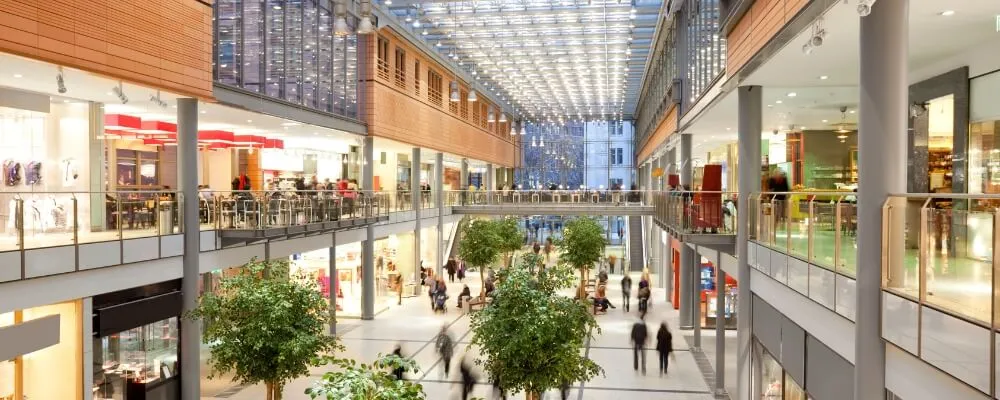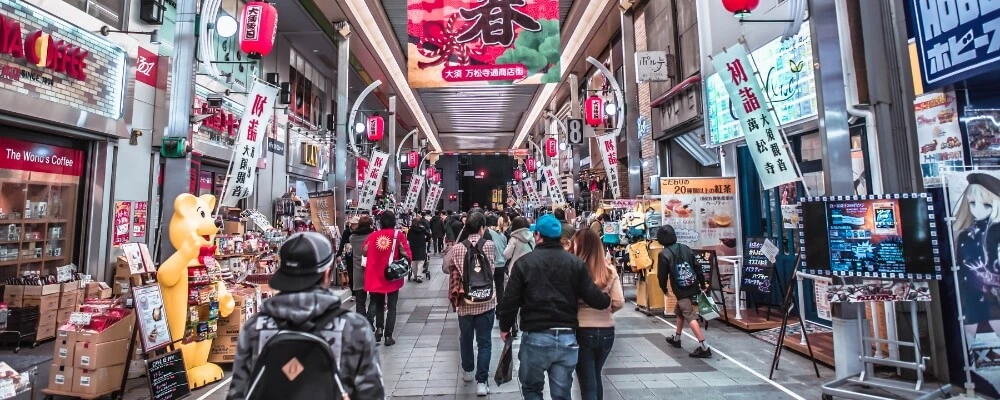With their bustling corridors and densely packed crowds, shopping malls represent a unique challenge regarding fire safety. Ensuring the safety of customers, staff, and property is a crucial responsibility that demands careful planning and thorough implementation of fire-fighting measures. This article delves into the 11 key fire-fighting equipment design requirements for shopping malls.
These guidelines focus on the essential equipment needed to mitigate fire and cover the critical safety practices that shopping malls must implement to provide a safe environment. Read on to better understand how these requirements are designed to enhance the safety and security of everyone within the premises of a shopping mall.
Fire Fighting Equipment Design Requirements For Shopping Malls
As shoppers, we want to feel safe and secure in our shopping malls. To ensure the safety of everyone in the mall, shopping centers must meet certain fire-fighting equipment design requirements. Here are11 common fire-fighting equipment design requirements for shopping malls:
1. Fire Suppression Systems
Shopping malls are bustling hubs of activity, and they must be safe and secure for the hundreds or thousands of people who visit them daily. For this reason, shopping malls must have fire suppression systems that detect and contain fires quickly and efficiently.
Such systems should include water sprinklers, smoke detectors, and other automatic fire-fighting equipment to help ensure that any blaze is controlled with minimal damage. This would save lives and property; having a good fire suppression system in place can drastically reduce the costs of a large fire.

2. Emergency Exits
Each mall must clearly mark emergency exits that can be easily identified in all situations. Not only should the exits be marked with a sign or other indicator, they should also be well-lit, allowing customers to find them quickly and safely, even if the lights were to go out for some reason. The team working in the shopping mall has a crucial responsibility to ensure the safety of their customers, starting with providing exit points that can ensure everyone’s safe escape if needed.
3. Fire Alarm Systems
Mall owners need to ensure the safety of their patrons by installing a fire alarm system that not only has an audible notification loud enough to be heard throughout the mall but also has visual components such as flashing lights or rotating sirens. This would ensure that everyone in the mall, including those with hearing disabilities, will be aware of any emergency, allowing them to take the necessary actions safely and quickly.
4. Emergency Lighting
It is important to consider providing emergency lighting throughout the entire mall area. In an evacuation or other emergency, these lights could provide an essential illumination source to assist visitors in finding their way out.
It is also essential that these lights are bright enough so individuals can quickly locate and follow an illuminated pathway out of the building. This would help ensure that everyone within the mall stays safe in the face of any potential emergency situation.
5. Fire Extinguishers
Although the shopping mall requires routine fire safety inspections and drills, having a fire extinguisher swiftly available in an emergency can be essential in combating an unexpected blaze. All shopping mall areas should contain visible and properly labelled fire extinguishers to ensure maximum preparedness. This will enable those within the area to identify a nearby source of help during an urgent situation and prevent further destruction of precious property or any possible harm to people. When incidents occur, a readily available and easy-to-locate fire extinguisher can make all the difference.
6. Fire Drills
Shopping malls bring millions of Americans in contact with each other every day, so it is paramount that mall owners ensure the safety of their customers and employees. Having regular fire drills helps ensure that everyone knows what to do in an emergency. During these drills, Mall employees and shoppers should become familiar with the mall’s layout, all emergency exits, and any other safety protocols.
This will help everyone feel more confident and prepared for a worst-case scenario, allowing them to know exactly what to do when one arises. Regular fire drills are a simple way for mall owners to show that they prioritize the safety of their customers and employees above all else.

7. Fire Hose Reel Stations
Shopping centers are bustling places filled with people and goods. With the increased activity comes the risk of a fire spike, and having fire hose reels around the mall is an effective way to keep shoppers safe in such a case. The hoses need to be clearly marked and easily accessible so everyone can access them without panic in an emergency.
Fire hose reels distributed throughout the mall will help members of the public familiarise themselves with their location and be prepared should it become necessary during an unexpected fire incident. With this additional safeguard in place, authorities can work more effectively at fighting fires while also minimizing disruption to shoppers who depend on malls for retail needs.
8. Emergency Response Plans
Shopping malls are a hub of activity and usually host hundreds, if not thousands, of people daily. It is paramount that they have an emergency response plan that outlines the steps to take in case of a fire. Knowing what procedures to take during an emergency can make the difference between life and death. The plan should include specific evacuation instructions, such as the best routes out of the building or safe gathering points.
Additionally, the building layout should be included so those managing the situation know where the emergency occurs and what routes are available for evacuation. Moreover, the emergency response plan must also cover other essential guidelines, such as roles for different staff members or equipment usage. Ensuring everyone’s safety when it comes to fire safety is everyone’s responsibility, and shopping malls should not take this responsibility lightly by having inadequate emergency plans.
9. Fire escapes
The safety of all individuals in a mall setting must always be the top priority. Having fire escapes installed on each floor provides an extra layer of security. It is a more accessible and reliable means of escape should the situation arise where all other exits are blocked due to a fire emergency.
Fire escapes should be clearly labeled, easily visible, and guarded to guarantee access even during stressful times, like when an alarm is ringing. Above all, fire escape routes need to offer a simple path that allows everyone to make their way to safety to correctly follow protocol and prioritize public safety.

10. Fireproof Building Materials
Shopping malls are usually bustling with people and can represent a significant fire hazard if the building materials used to construct them fail to resist fires. Therefore, all walls, ceilings, floors, and other internal structures should be designed using fire-resistant materials to help prevent any potential catastrophes from occurring.
Fire safety is a serious issue that must not be taken lightly, especially when large groups are involved in shopping activities. These materials may help save lives by providing an effective barrier against fires and containing their spread.
Particular attention should also be given to the placement of escape routes so shoppers can evacuate quickly in an emergency situation.
11. Fire Walls
Installing firewalls between each mall section is one of the best ways to ensure mall protection. These thick slabs of concrete are designed to contain whatever flames may arise from one part of the mall, thus limiting its spread and reducing the risk of severe fires that could endanger shoppers and store owners alike. Ensuring that each mall segment has a firewall is essential to maintaining a safe environment for customers and vendors.
These are just some standard fire-fighting equipment design requirements in shopping malls. It is important to ensure that these requirements are met to protect shoppers from the dangers of a fire. With the right precautions, you can help keep your mall safe and secure for all who enter.
Conclusion
In conclusion, the safety of individuals in a shopping mall is a paramount responsibility that cannot be understated. The array of fire-fighting equipment design requirements we’ve explored offers a comprehensive approach to safeguarding lives and property. From utilizing fire suppression systems, fire-resistant materials, and strategically placed emergency exits to implementing regular fire drills and well-documented emergency response plans, each measure plays a crucial role in ensuring overall safety.
Shopping mall owners, staff, and visitors benefit from a proactive approach to fire safety. By ensuring that these 11 key requirements are meticulously met, shopping malls can provide a safe, secure environment that allows everyone to focus on what they came for an enjoyable shopping experience.

